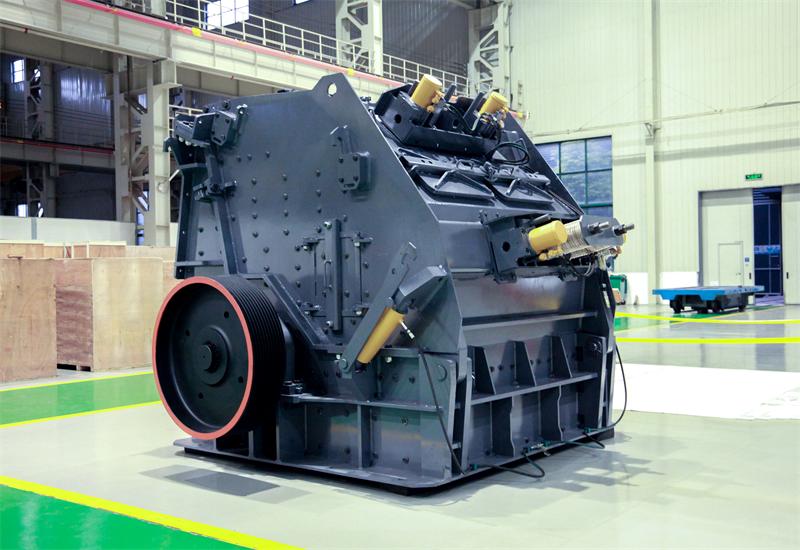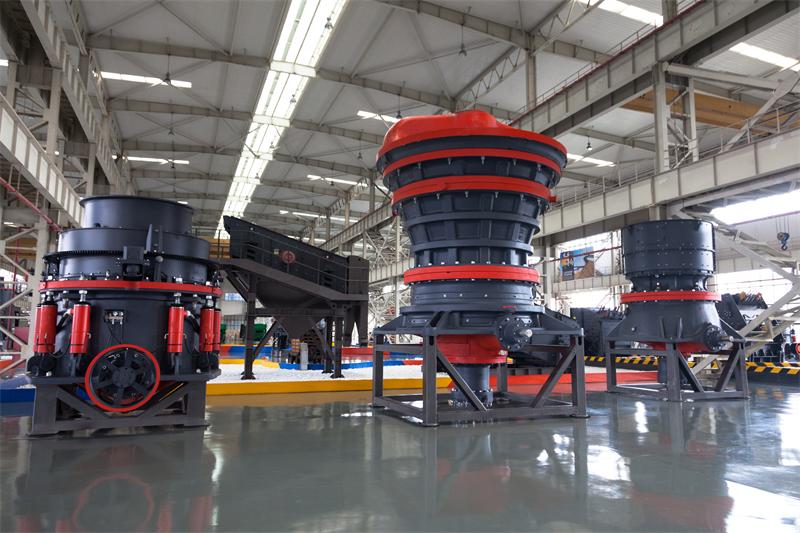
In the realm of large - scale mining operations, the CI5X heavy - duty rotor high - efficiency impact crusher has emerged as a game - changer. This powerful machine is designed to meet the rigorous demands of the mining industry, with its rotor design being the core factor that significantly influences its performance. In this article, we will delve deep into the optimization of the rotor design of the CI5X heavy - duty rotor high - efficiency impact crusher, exploring how it can enhance the crushing efficiency and reduce energy consumption.
The efficiency of an impact crusher is closely related to three key principles of rotor design: mass distribution, rotational inertia, and impact kinetic energy. Mass distribution affects the balance of the rotor during operation. A well - balanced mass distribution can ensure smooth rotation, reducing vibration and wear on the machine. Rotational inertia, on the other hand, determines the ability of the rotor to maintain its rotation. A higher rotational inertia means that the rotor can store more energy, which is crucial for continuous and efficient crushing. Impact kinetic energy is directly related to the crushing ability of the crusher. The greater the impact kinetic energy, the more effectively the crusher can break down ores.
Let's look at some data to understand their impact. In a comparative test, a crusher with an optimized mass distribution reduced vibration by up to 30% compared to a non - optimized one. This not only improved the service life of the machine but also enhanced the safety of the operators. Regarding rotational inertia, studies have shown that a 20% increase in rotational inertia can lead to a 15% improvement in crushing efficiency. And for impact kinetic energy, a 10% increase in impact kinetic energy can result in a 25% reduction in the size of the crushed ore particles.

Ore hardness, particle size, and production capacity requirements vary in different mining operations. Therefore, it is necessary to adjust the rotational speed and hammer layout of the crusher accordingly. For hard ores with large particle sizes, a higher rotational speed and a more densely arranged hammer layout are recommended. This can increase the impact kinetic energy and ensure that the ores are effectively broken. For softer ores with smaller particle sizes, a lower rotational speed and a sparser hammer layout can be used to save energy while still achieving the desired crushing effect.
For example, when dealing with high - hardness ores such as granite, increasing the rotational speed from 800 rpm to 1000 rpm and adjusting the hammer layout from a 4 - hammer to a 6 - hammer configuration can increase the crushing efficiency by 20%. In contrast, for soft ores like limestone, reducing the rotational speed to 600 rpm and using a 3 - hammer layout can reduce energy consumption by 15% without sacrificing much in terms of crushing performance.
To verify the effectiveness of the rotor design optimization, let's take a look at some real - world case studies. In a large - scale gold mine, the implementation of the optimized rotor design in the CI5X crusher led to a 25% increase in crushing efficiency and a 20% reduction in energy consumption. The mine was able to process more ore with less energy, significantly reducing the operating costs. Another case in a copper mine showed that by adjusting the rotational speed and hammer layout according to the ore characteristics, the crusher's maintenance frequency was reduced by 30%, resulting in less downtime and higher overall productivity.

There are some common operation mistakes that can affect the performance of the crusher. One of the most typical mistakes is rotor imbalance and uneven wear. This can be caused by improper installation, uneven feeding, or long - term operation without maintenance. To diagnose and solve these problems, operators can use dynamic balance testing methods and a rotor status self - inspection checklist. Regularly checking the rotor's balance and wear condition can help prevent major breakdowns and ensure the stable operation of the crusher.
For example, conducting a dynamic balance test every three months can detect minor imbalances early and correct them before they cause serious problems. And using a self - inspection checklist to check the hammer wear, rotor alignment, and other key components on a weekly basis can help operators identify potential issues in a timely manner.
The CI5X heavy - duty rotor high - efficiency impact crusher offers a high - performance solution for the mining industry. With its optimized rotor design, it can significantly improve the crushing efficiency, reduce energy consumption, and lower the maintenance cost. By investing in this advanced crusher, mining companies can achieve higher productivity and lower operating costs, resulting in a better return on investment.
If you are looking to enhance the performance of your crusher and reduce your operating costs, don't miss out on the opportunity to learn more about the CI5X heavy - duty rotor high - efficiency impact crusher. Click here to get the detailed product solution.